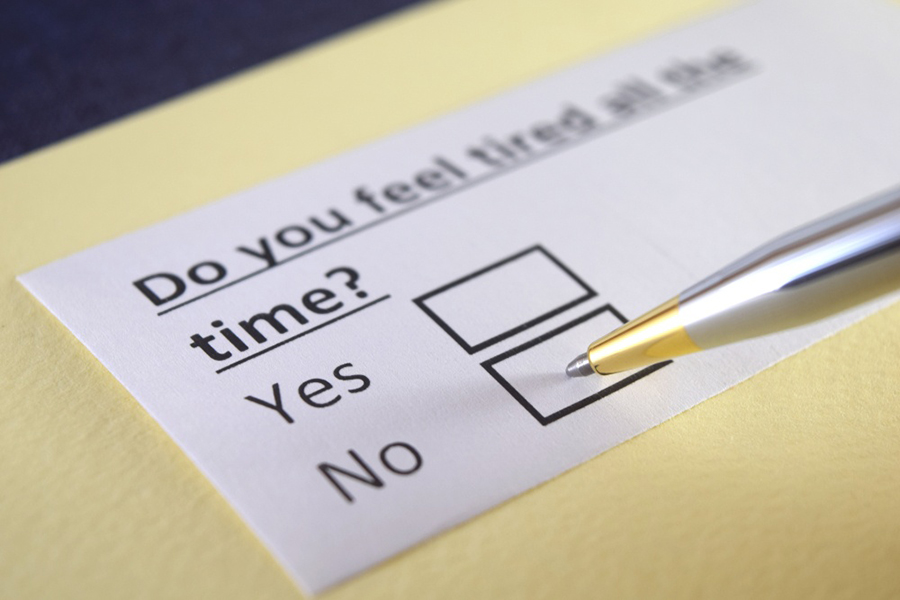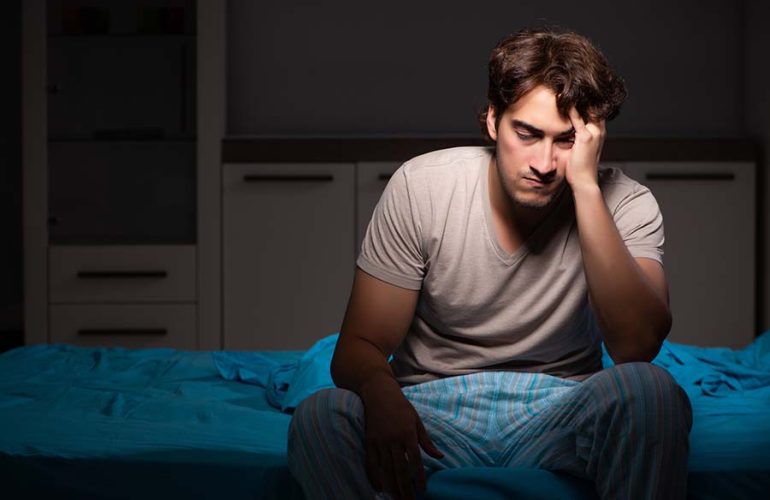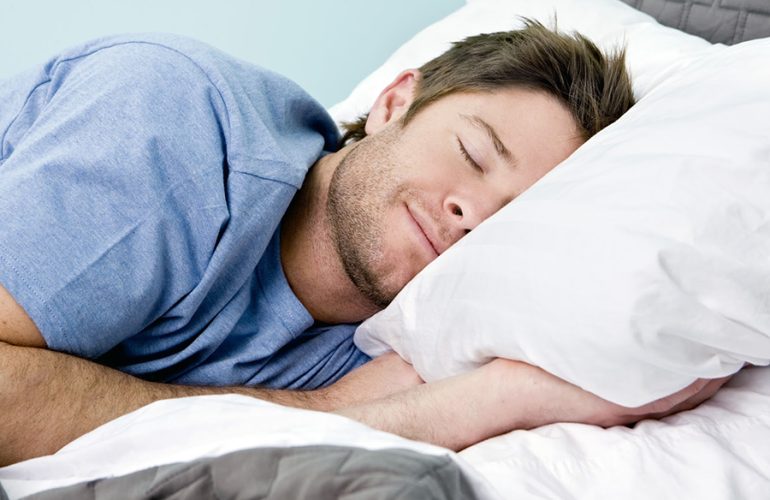“I’m tired and sleepy every day,” said the exhausted patient. No matter how early she went to bed or how late she slept, she still felt extremely tired and fatigued. She lacked the energy and mental clarity to do the things she loved to do. Sometimes she’d take naps at work, or worry about falling asleep behind the wheel driving home or picking up her kids from school.
After weeks or months of this excessive fatigue, she went to see a sleep medicine specialist to solve the mystery once and for all: why was she so tired all the time?
Sleep physicians call this phenomenon of chronic tiredness and drowsiness “excessive daytime sleepiness.” According to some estimates, about 1 in 5 adults experience this problem, to an extent that the daytime sleepiness interferes with their regular activities.
In fact, excessive daytime sleepiness is one of the most frequent reasons people visit sleep clinics.
If you’re tired all the time, even after a full night’s sleep, you’re wise to consult with a sleep specialist: excessive fatigue puts you at risk for car and motorcycle collisions and work-related accidents. Your health can suffer, too. Over the long term, the cumulative effect of an undiagnosed sleep disorder increases your risk of developing a number of diseases and health problems, such as cardiovascular disease, obesity, depression, memory loss and cognitive decline.
Parents should take note: chronic sleepiness isn’t restricted to adults. Adolescents and teens are often habitually sleep-deprived, partly because their body clocks come into conflict with the typical school schedule.
Daytime sleepiness is a serious issue that can undermine your wellness and safety. Like the patient in the above example, you should seek help so you can resolve these symptoms. But be aware that being chronically weak and sleepy every day can have many possible causes. If your regular physician has ruled out underlying illness or medication side effects, then a sleep disorder is probably the cause.
Do I Have a Sleep Disorder? (Step 1)
The first step to diagnosing a sleep disorder is to visit a sleep medicine physician or sleep clinic. At your first visit, a sleep medicine physician will take a full health history, listen to your symptoms, and perform a physical exam to get a better idea of your general health and whether you may have a sleep issue.
However, a diagnosis may not happen in just one office visit: there are over 80 total sleep disorders, and many of these are characterized as disorders of excessive daytime sleepiness.
To solve the mystery of your sudden, unwanted desk naps and non-stop yawning, you may need to work with your sleep specialist over a period of time—by tracking your symptoms (and, if you have a bed partner, asking them to track your symptoms for you). You may also be asked to undergo an overnight sleep study so your specialist can observe how your body, including your brain, behaves during sleep.
Which Sleep Disorder May Be Causing My Excessive Daytime Sleepiness? (Step 2)
The second step in treating your sleepiness is to determine which of the numerous sleep disorders you have. Many different sleep disorders could be the cause of your tiredness during the day. If you’re pretty certain you don’t have insomnia, then your daytime fatigue could be caused by one of the following.
Sleep Apnea
Sleep apnea (in particular, obstructive sleep apnea, or OSA)
is one of the most common causes of daytime sleepiness in adults. Apnea
affects almost 20 million Americans, though most remain undiagnosed.
Common signs of sleep apnea in adults include the following symptoms:
- loud snoring
- choking or gasping during sleep
- morning headaches
- daytime sleepiness
- poor quality of life
In children, apnea is sometimes called sleep-disordered breathing, and may not include snoring. OSA in kids is often caused by inflamed tonsils or adenoids. Symptoms may include poor performance in school, acting out or misbehaving, ADHD symptoms, and dark circles under the eyes.
If left untreated, sleep apnea increases your risk of high blood pressure, heart attack, stroke, diabetes, depression and weight gain.
A number of effective treatment options are available, including
(for OSA) CPAP therapy or oral appliance therapy. Both methods open the
airway and ease breathing during sleep, which can stop the sleep
fragmentation from constant awakenings to breathe. (Sleep fragmentation
is the technical term for “broken sleep”—lower quality sleep due to
interruptions of the normal sleep cycle.)
Narcolepsy
Narcolepsy is a relatively uncommon sleep disorder, affecting about
200,000 Americans, according to The Narcolepsy Network. This disorder
makes a person sleepy most of the time. You’ve possibly seen depictions
of it in popular culture because it’s so dramatic; people with
narcolepsy sometimes fall asleep very suddenly, even when they don’t
expect to. They can even fall asleep in seconds while they performing
activities like eating, talking, standing in line at a store, or
driving.
Other symptoms indicating you might be a narcoleptic include:
- Suddenly going limp (cataplexy)
- Feeling weak (especially when excited, angry, or laughing)
- Inability to move or speak in the few moments right after waking or just falling asleep (sleep paralysis)
Once diagnosed, narcolepsy can be treated with medication and lifestyle modifications, as well as alternative therapies.
Idiopathic Hypersomnia
Idiopathic hypersomnia is a sleep disorder that makes a person sleepy all the time, without any known underlying cause. The symptoms are:
- Regular excessive daytime sleepiness for six months or more
If your sleep physician can’t find any clear cause of your sleepiness, and can rule out issues like other medical conditions, mental illness, or medications side effects, then he or she will probably ask for you to have a sleep study (polysomnography) and multiple sleep latency test to help confirm a diagnosis.
Treatment for this sleep disorder is often a combination of behavioral changes (such as allowing extra time for naps and sleep) and medication to help you stay awake when you need to be.
Periodic Limb Movements Fragmenting Your Sleep and Restless Leg Syndrome
Some sleep disorders are characterized by unwanted, uncontrollable limb movements during or before sleep. These movements—which can range from muscle twitches to flexing your feet to outright kicks—tend to happen every 30 seconds or so. They can awaken you and your bed partner. Periodic limb movement disorders can fragment your sleep. The discomfort from this condition may also make it difficult for you to go back to sleep.
The best-known limb movement disorder is Restless Legs Syndrome
(RLS), also called Willis-Ekbom disease. The main symptom of RLS is the
feeling that you have to move your legs, especially before going to bed.
You may also feel burning or itching inside your legs.
The
condition itself is not serious, but the resulting sleep fragmentation
and frustration can be problematic for your health. The good news is, if
you’re diagnosed with this condition, it’s treatable with medication.
Summary
If you’re very tired every day over a long period of time—six months or longer—you may have an undiagnosed sleep disorder. There are over 80 known sleep disorders in total, many of which can cause excessive daytime sleepiness. To figure out which sleep disorder is causing your exhaustion and fatigue, see a sleep medicine specialist for an exam and potential additional testing. Letting a sleep disorder go undiagnosed is harmful to your long-term health. The good news is, a sleep doctor can help to treat and manage your condition so you can feel more rested and alert—and get the sleep you need to stay healthy.
For more information on why you might be sleepy all the time, please contact Sweet Sleep Studio at (913) 221-6059 today!




